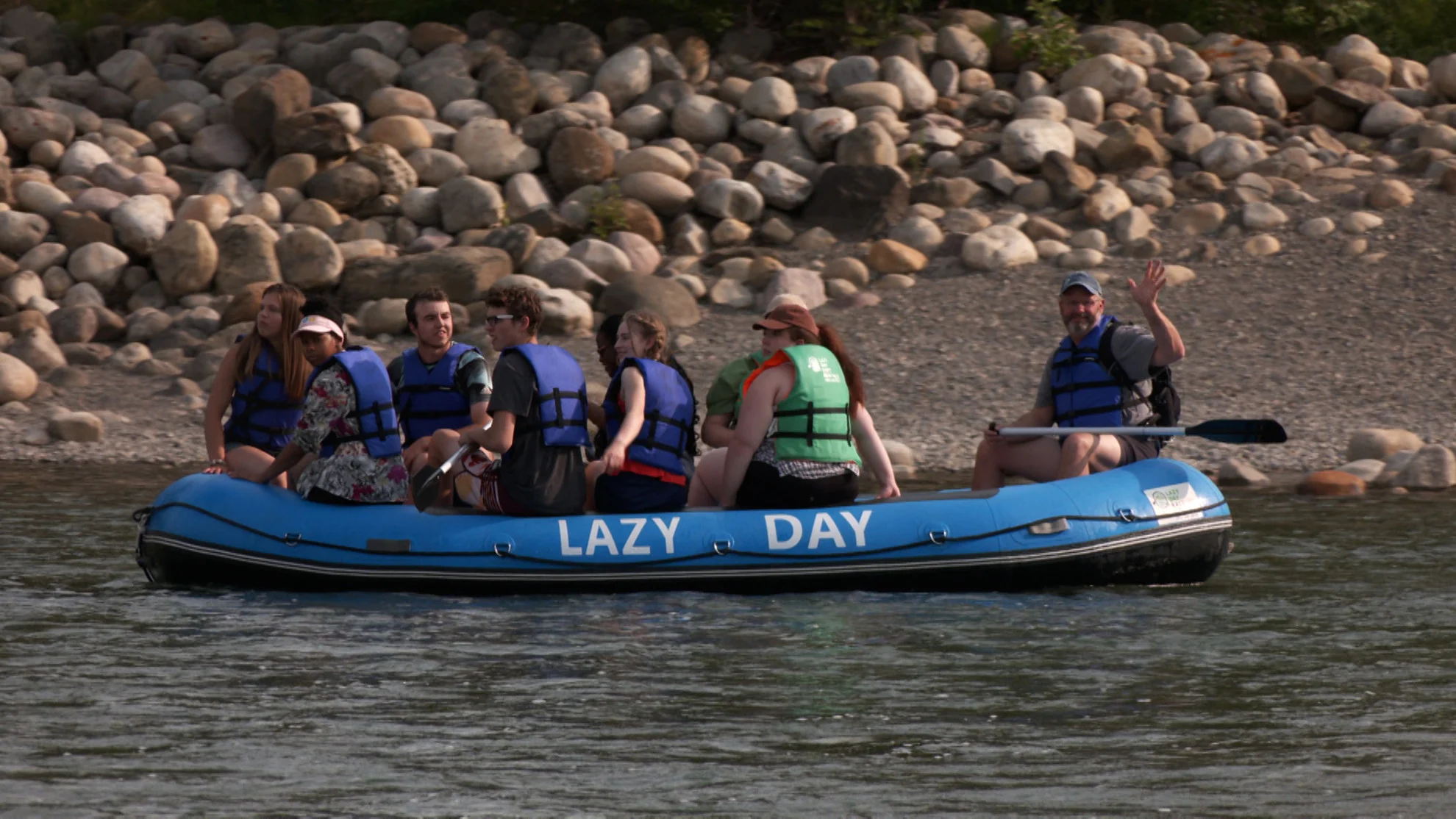
The best way to float the Bow River in Calgary this summer
A relaxing float through Calgary on the Bow River can become stressful, even dangerous, without following these essential tips
They turn waterways into something resembling highways during the height of summer. Floating down the Bow and Elbow Rivers is one of Calgary's favourite summer pastimes, and for good reason.
It can be a rollickingly unique adventure in the elements that gives a view of Calgary you (and your river-faring crew) would never otherwise see.
But, like with any expedition into the wild, popper planning is key to creating a safe, stress-free experience, so we’ve compiled a list of everything you need to know to plan the perfect float.
SUMMER 2024: Get an in-depth look at the Summer Forecast, tips to plan for it, and much more!
The essentials
While it likely goes without saying, sun protection is key to having a pain-free floating experience both day-of, and on the days after.
The UV index regularly climbs into the very high category in Calgary during the summer, where unprotected skin can burn quickly especially between 11 a.m. and 3 p.m.
Choose a broad spectrum sunscreen, and as a general guideline apply a teaspoon to your face and neck, and about a shot glass-worth to your body, and remember to reapply if you decide to cool off in the river water.

Calgary’s fire department has performed hundreds of river rescues in recent years.
On top of snacks and water, you should also bring at least one phone in a waterproof case. As much as you may want to disconnect, these are still wild rivers that pose hazards - especially to the unprepared.
The Calgary Fire Department typically performs more than 100 river rescues every year, so you’ll want to have a dry, working phone nearby should an emergency arise.
Remember that it is mandatory by bylaw to wear a lifejacket when floating in Calgary, as well. Failure to do so could net you a $500 fine.
The vessel
The Bow and Elbow rivers are rife with rock and wooden hazards that can tear thin plastic to pieces.
While it might cost more than arm floats, shelling out for a watercraft made of strong, tear-resistant material can be the difference between sliding over a jagged rock hassle-free, and your “float” turning into a swim.
The City of Calgary recommends watercraft made from materials like nylon polyester, coated with a synthetic rubber. Pool inflatables are not recommended.
Or, you can turn to one of the many raft rental locations around Calgary to ensure you’ve got a reliable river ride.
"The key is that it is a wild river no matter where you are, and it is rapid. There are times when there are things under the water that you don’t see, so you’ve got to be alert," says Lazy Day Raft Rentals Owner, Arlin Friesen.
"Watch for the things under the water and then the bridge pillars are the big thing. You don’t want to hit a bridge pillar or you could capsize, even in our quality boats."
The weather
Perhaps most important to a pleasant float experience, is attention paid to the weather — and not just to the forecast for the day of your float.

When river flow is forecasted to exceed 280 m3/s, the City of Calgary announces a flow advisory during which floating is not recommended and rivers are patrolled by fire department officials
The forecast for the day ahead is crucial for determining if storms are imminent as well as what hazards the sun will pose, including the forecast UV index.
SEE ALSO: Water safety: Staying safe in lakes, rivers, and pools
The Calgary region's terrain and proximity to the mountains mean that dangerous storms can form quickly, hence the advice to keep a phone loaded with The Weather Network app on-hand.
But the duration and speed of your float is largely influenced by the weather of the past.
According to City of Calgary River Forecaster Sandy Davis, precipitation falling in the mountains and foothills will raise levels on the Elbow River in nine to 12 hours (which is why accurate forecasting is crucial to effective flood response), and in about 24 hours on the Bow.
She adds that a few warm days in the mountains in May or June, when snowpack is still present, can create enough meltwater to raise river levels to a peak in about a week’s time.
So, generally speaking, if you pay attention to the weather upstream of the river you intend to float down, you can get a good idea of whether or not you can expect a faster than average ride.
Friesen says a voyage from his company’s launch point Baker Park to the end point in Sunnyside will typically take about three hours if flow rates are around 125 m3/s, but the same trip can take less than two hours when flow rates increase towards and above 200 m3/s.
But as Davis explains, accurate river forecasting is quite complex.
She says that when making the river flow forecasts, which are updated several times a day and sent out to raft rental companies as well as affected city departments, the city considers several different global circulation climate models, while consulting with Environment Canada and the province of Alberta’s River Forecast Centre to make the best prediction for precipitation and river response in the basin.
"Things can change very quickly, because we’re in a mountainous, steep watershed, but also in a really skinny watershed that goes east-west," she says.
"So storms that come in from the south or east, and kind of bump up against the foothills there, they can completely miss our basin really easily because it's so long and skinny, so it can really be very uncertain if a forecast is going to come to fruition."
Current flow rate information, tracked by river flow stations, can also be found at rivers.alberta.ca.











